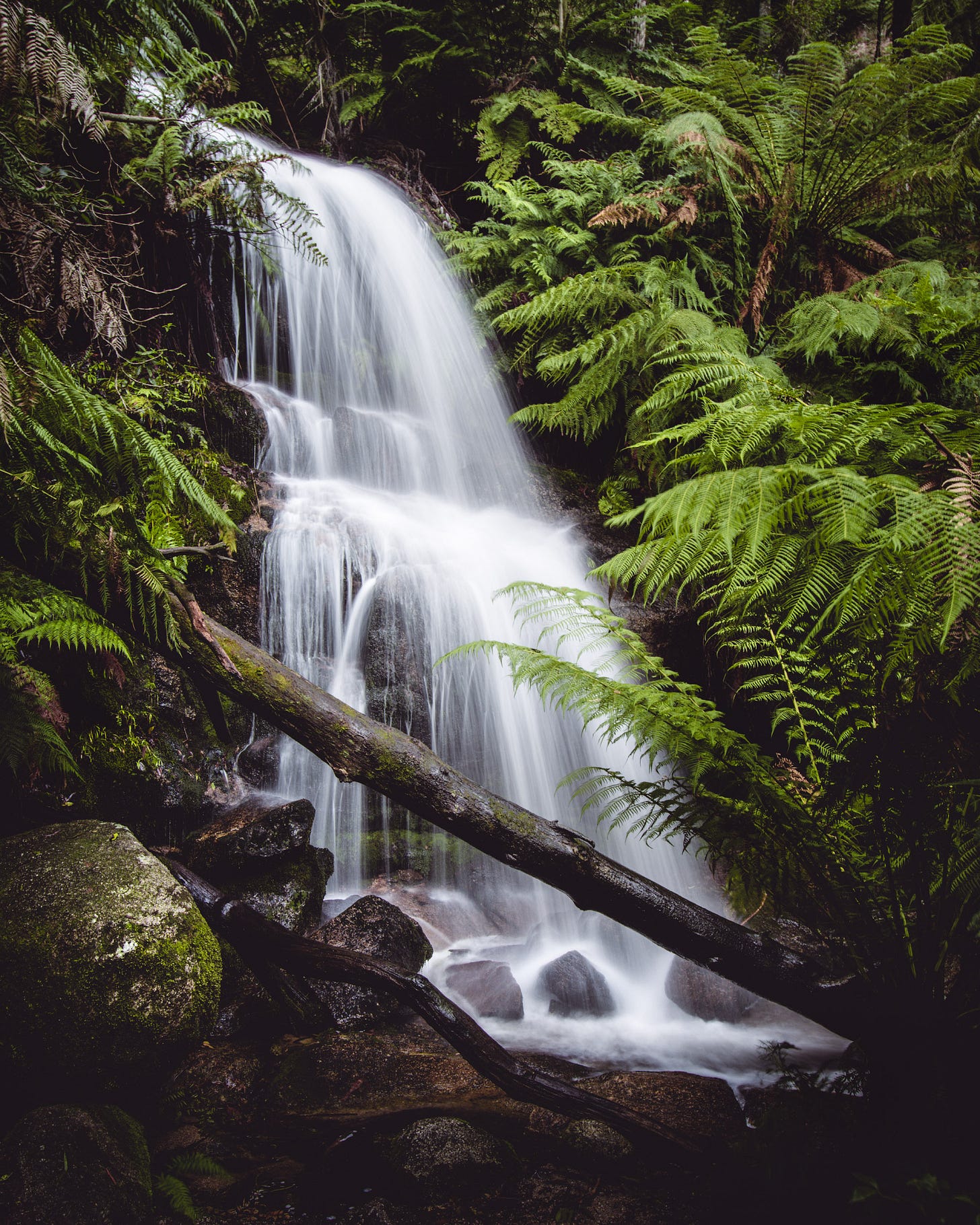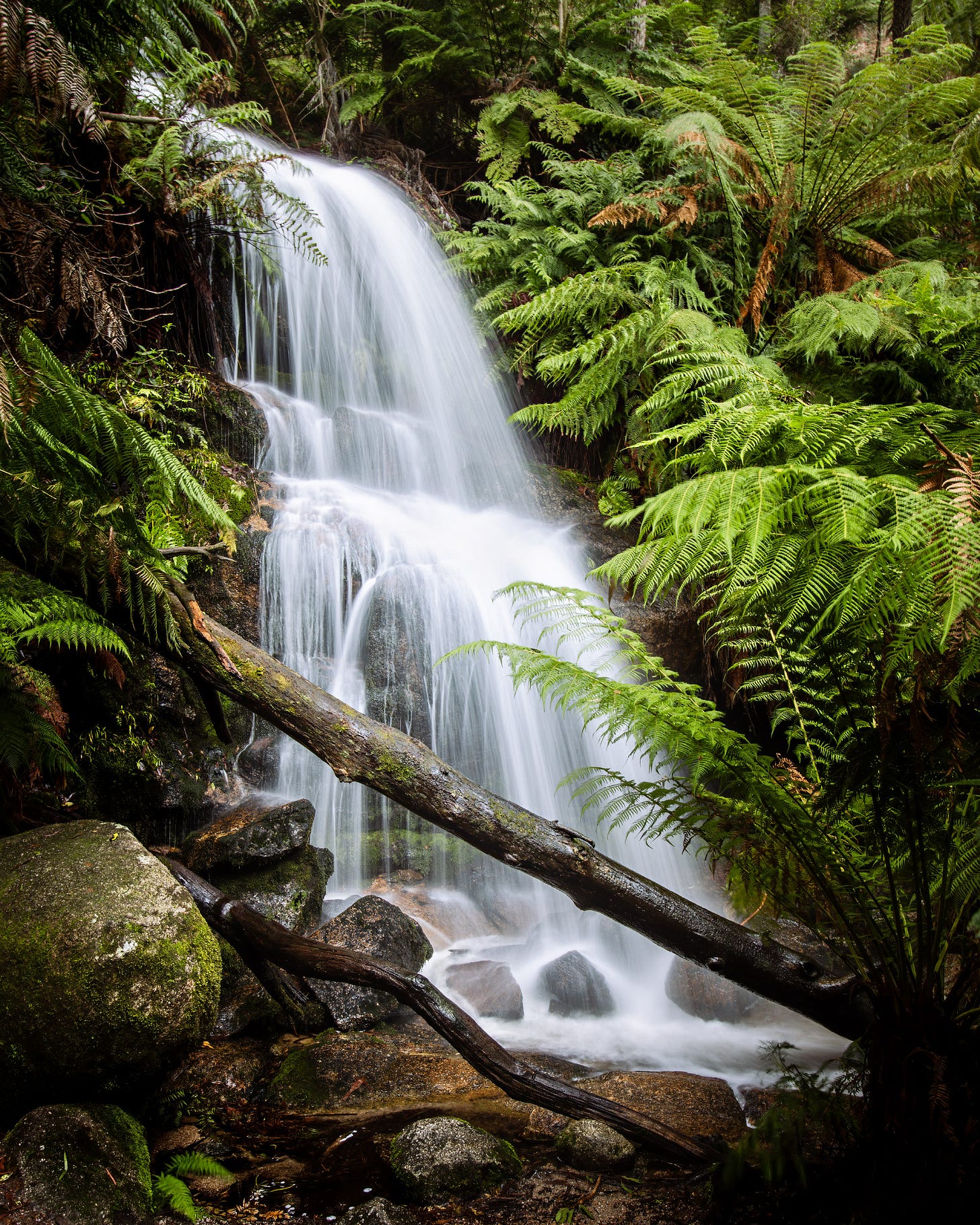Hi, I am a landscape and nature photographer based in Melbourne, Australia and enjoy using my camera to explore our remaining wild places and connect with nature.
Over the past couple of months, I have been working through images from previous years in my Lightroom catalogue to find photos to re-edit from scratch.
This has been a valuable exercise for me to think about how and why my post-processing may be different now compared with my first edit. Do I see the image differently now than I did before? Do I have new or better technical processing skills? Is my overall style or approach to photography changing?
In this newsletter I will use one example to compare an previous edit with a new edit. I think this could be a valuable exercise for any photographer.
The image below is from Mount Buangor State Park in August 2022. I was on my way to the Grampians National Park when I decided to do a short side trip. The weather was very overcast, with a little drizzle, but there was the perfect amount of flow over these falls.
As I usually do, upon returning from my trip I selected a few favourites and edited them over the next week or so. With the experience fresh in my mind, I wanted to emphasise the dark and overcast conditions and highlight the flow of water.
This look is consistent with a lot of my forest images – quite dark, green and high contrast – although my photos of other subjects often have a completely different look (check out my Instagram gallery as evidence). As a non-commercial photographer, I see no need to be limited to a particular style any more than I want to be limited to a 4x5 crop.
As much as I like this edit, I now feel that it is too dark and flat. The overly dark foreground looks unnatural, the blacks are too faded and the shadows are too deep and lack detail.
So I re-edited the image from scratch. Overall, I have brightened and warmed the image, lifted the shadows to get detail and increased the whites. I also shifted the greens (luminence and hue) in the ferns on the right to make the colour more realistic and bring in an increased sense of depth. These are not big changes but they significantly change the image. While retaining the overcast feel, to me this is more natural image with more depth and impact.
One of the biggest reasons for a different approach to editing is that I am increasingly focussed on printing my work. While I will continue to post to social media (see Instagram – what is it good for?), I am now editing with a print in mind. And there is nowhere to hide with an A2 print on fine art paper compared with a 1080 pixel wide image viewed on a screen.
To improve my skills with printing I have undertaken two online workshops with Les Walkling (website). Les has been photographing, exhibiting, teaching and consulting for nearly 50 years. He is well known for working with the very best photographers in Australia to help them make fine art prints and prepare for exhibitions.
Les runs a number of interactive online courses, generally over two days. I started with the Digital Printing course, which covers the entire process for producing fine art prints, and then the Crafting a Digital Print course.
These courses were both inspiring and humbling. Over the two days I was amazed at the Les’ skill at seeing and manipulating an image in the most subtle ways to emphasise the story that the photographer wanted to tell. As Les looked at our images, he articulated the story he saw in the photograph and how the elements in the image not only directed the eye around the frame but strengthened the story being told. He was then able to use a range of tools to strengthen this message. He is a master craftsman who, while in complete command of the sophisticated tools at our disposal these days, is focused on creating meaningful art.
After the inspiration of these courses, by Monday I would fall into a funk, thinking about how far I have to go on my photography journey. Sometimes it feels two steps forward, one step back. Nevertheless, using the tools and knowledge gained in these courses, and more regularly printing my work, I feel I am building more technically sound images telling a stronger story.
Here is my re-edited image. Is it “better” than the first version? Interestingly, when I did a quick straw poll of non-photographers asking them to choose which image they preferred (on a large 32-inch monitor), most people preferred the first, moodier image!
What do you think?








A really interesting article James. I think there is so much value in revisiting old images and reprocessing them from scratch. I have done this many times as my photography has evolved and my style has changed.
As you say, with print there is nowhere to hid so processing with this in mind definitely makes me more critical and precise with my edits.
Personally I think your re edited version of the waterfall is your best version. You have brought out some lovely subtle tones and I think the overall image has more warmth and emotion.
Although I tend to like darker photos that highlight certain key elements, I really appreciate the improved detail in your second edit. I have re-edited some old photos myself and been surprised with how differently they turn out!
I'm really interested in printing more of my photos, but feel like such a novice in an entirely different but related field. I think I need a course like the one you took!